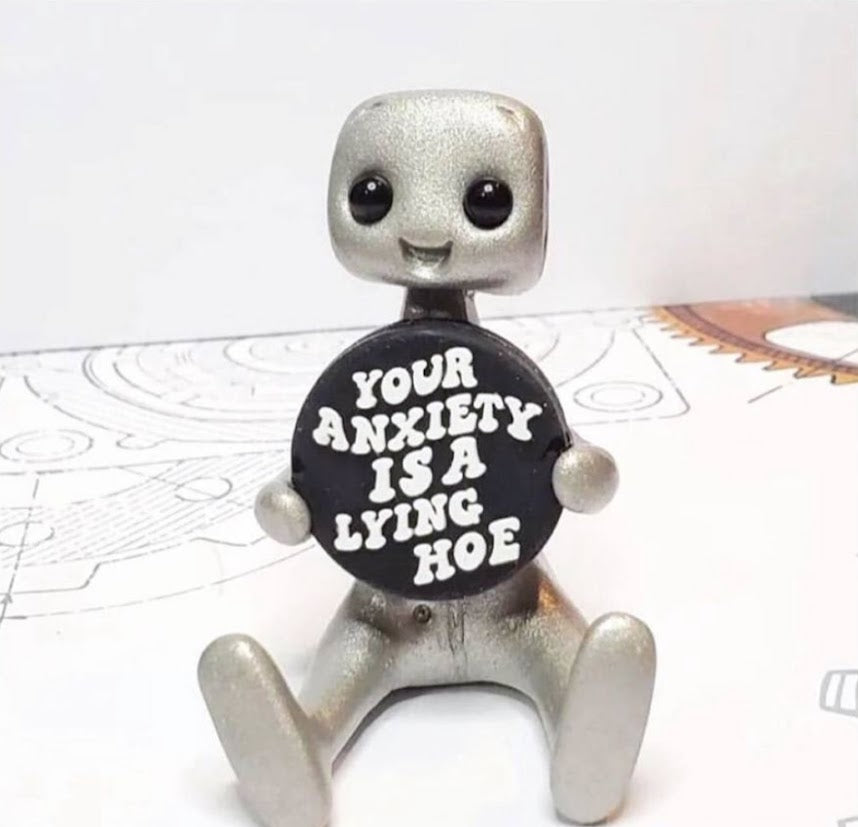
Your Anxiety is Lying to You
_______________________________________________________________
This post is sponsored by Calmerry, providing licensed counselors for online therapy. Use code, “CARE20” to get 20% off when you start today._______________________________________________________________
Anxiety can be a relentless, intrusive voice that disrupts your peace and convinces you of worst-case scenarios. It's like that annoying friend who always has something negative to say, and it's time to recognize it for what it is—a liar. Let's delve into the clinical reasons why anxiety exists, what actually happens physically within your body, and what you can do about it.
Why Anxiety Exists
Anxiety is a natural response to stress, a part of our body's fight-or-flight mechanism. This response has been crucial for our survival, alerting us to potential threats and preparing us to deal with them. However, in modern times, this mechanism can go haywire, causing us to feel threatened by non-life-threatening situations.
From an evolutionary standpoint, our ancestors needed anxiety to react quickly to dangers like predators. This heightened state of alertness and readiness was a crucial survival tool. But in today's world, where physical threats are less common, our brains can misinterpret everyday stressors—like work deadlines or social situations—as threats, triggering the same anxious responses.
What Happens in Your Body During Anxiety
When you experience anxiety, your body undergoes several physical changes as part of the fight-or-flight response. Here’s what typically happens:
-
Adrenaline Release: Your adrenal glands release adrenaline, a hormone that prepares your body to react quickly. This can cause symptoms like increased heart rate, rapid breathing, and heightened senses.
-
Cortisol Surge: Alongside adrenaline, cortisol, the stress hormone, is released. Cortisol helps your body manage stress by maintaining fluid balance and blood pressure, but too much cortisol can be harmful.
-
Heart Rate and Breathing: Your heart rate increases to pump more blood to your muscles, preparing you to either fight or flee. Rapid, shallow breathing (hyperventilation) occurs to increase oxygen intake, but this can lead to dizziness and light-headedness.
-
Muscle Tension: Your muscles tense up to protect your body from injury. Chronic anxiety can lead to persistent muscle tension, resulting in headaches, migraines, and other physical aches.
-
Digestive Changes: Blood flow is diverted away from your digestive system, causing issues like nausea, diarrhea, or constipation.
-
Sweating: You start sweating more to cool your body down in anticipation of physical exertion.
These physical responses are all part of your body's way of preparing to handle a perceived threat. However, when there's no actual danger, these reactions can be uncomfortable and distressing.
Recognizing Anxiety Symptoms
Understanding the physical symptoms of anxiety is the first step in recognizing when your body is reacting to stress:
- Rapid heart rate or palpitations
- Sweating or chills
- Trembling or shaking
- Shortness of breath or hyperventilation
- Chest pain or discomfort
- Nausea or stomach issues
- Dizziness or light-headedness
- Muscle tension or aches
- Feeling restless or on edge
_______________________________________________________________
This post is sponsored by Calmerry, providing licensed counselors for online therapy. Use code, “CARE20” to get 20% off when you start today.
_______________________________________________________________
What You Can Do About Your Anxiety
Once you recognize the symptoms of anxiety, there are several strategies you can use to manage and reduce its impact:
-
Mindfulness and Meditation: These practices help you stay present and reduce the tendency to ruminate on anxious thoughts. Techniques like deep breathing and progressive muscle relaxation can help calm your mind and body.
-
Cognitive-Behavioral Therapy (CBT): CBT helps you identify and challenge negative thought patterns. Working with a therapist, you can develop healthier ways of thinking and responding to stress.
-
Physical Activity: Regular exercise releases endorphins, which are natural mood lifters. Activities like yoga, walking, or any form of exercise you enjoy can significantly reduce anxiety levels.
-
Healthy Lifestyle Choices: Eating a balanced diet, getting adequate sleep, and limiting caffeine and alcohol intake can improve your overall well-being and reduce anxiety.
-
Professional Help: Sometimes, anxiety can be overwhelming, and it’s important to seek professional help. Therapists can provide tailored strategies, and in some cases, medication might be necessary.
-
Social Support: Talking about your anxiety with friends, family, or support groups can provide relief and reduce feelings of isolation.
Anxiety is a natural part of life, but it doesn't have to control you. By understanding the physical responses associated with anxiety and implementing strategies to manage it, you can take back control and live a more balanced life. Remember, your anxiety is lying to you, and you have the power to challenge it.
Join the Wellness Wave Community
At Wellness Wave, we are here to support you every step of the way. Join our community for more tips, resources, and support on managing anxiety and improving your mental well-being. Together, we can navigate this journey to a healthier, happier life.


